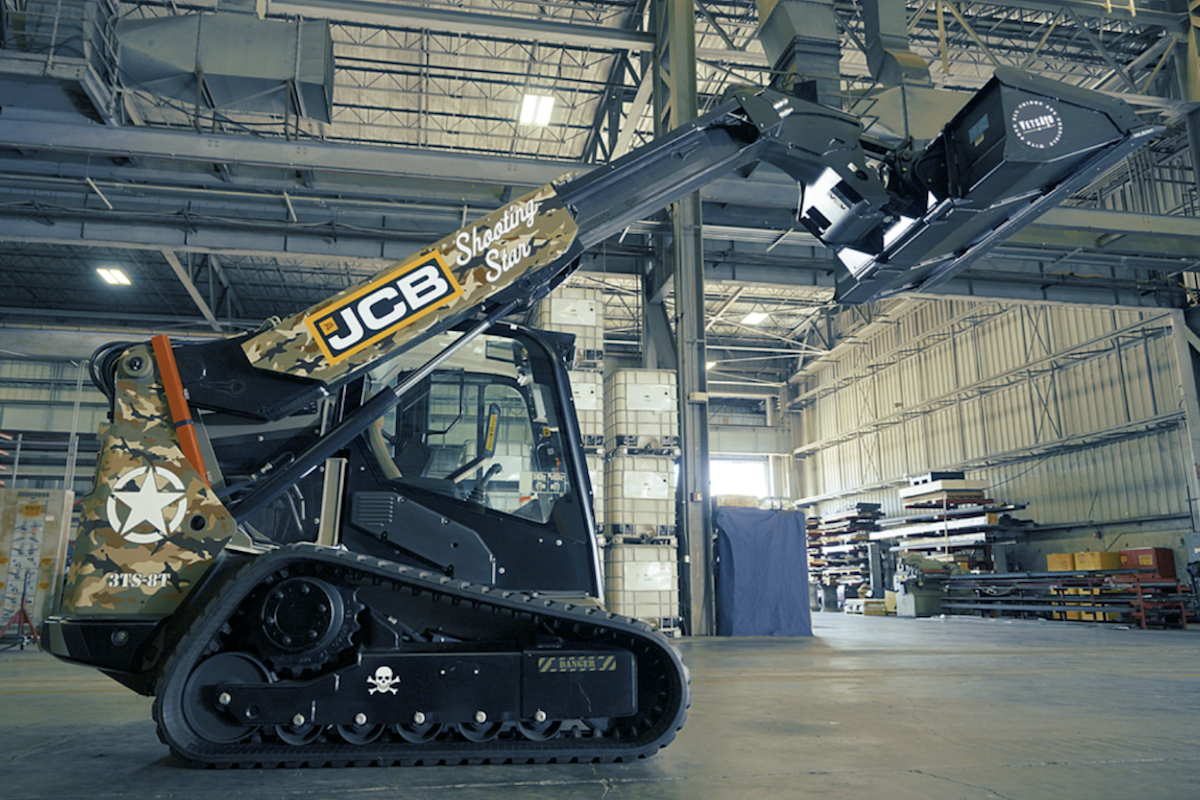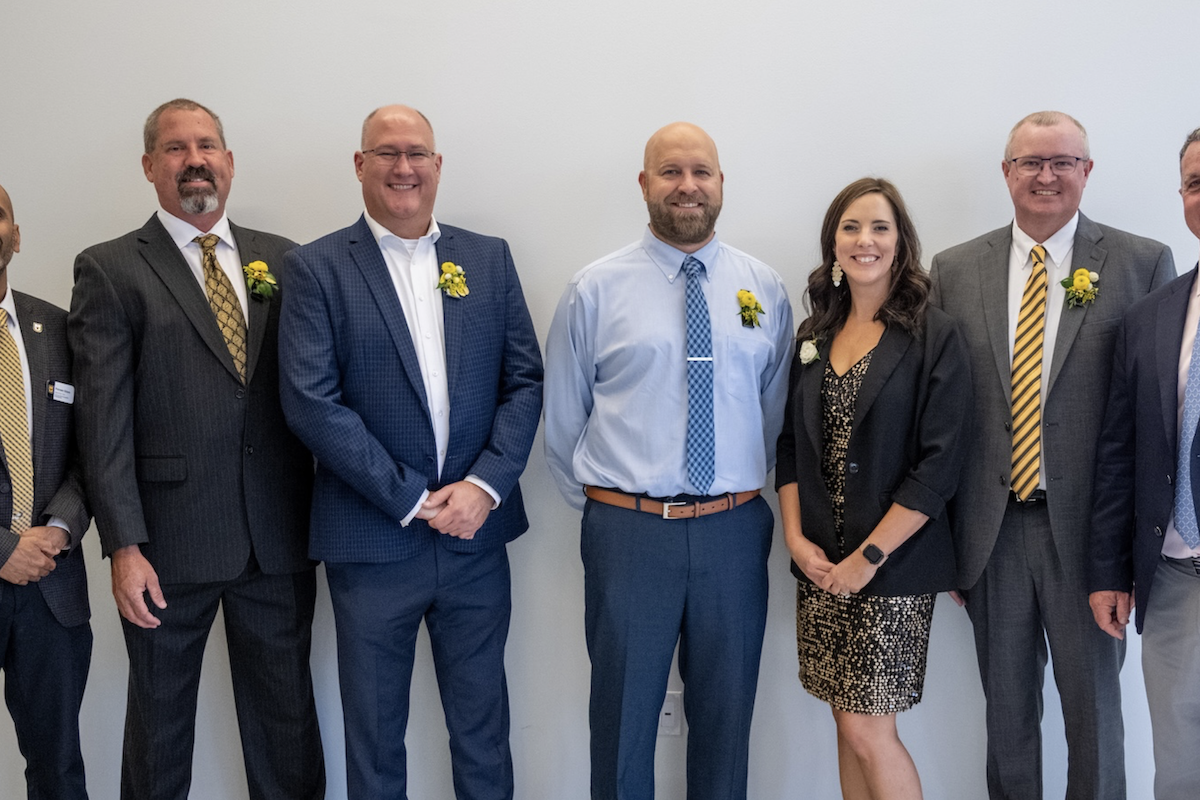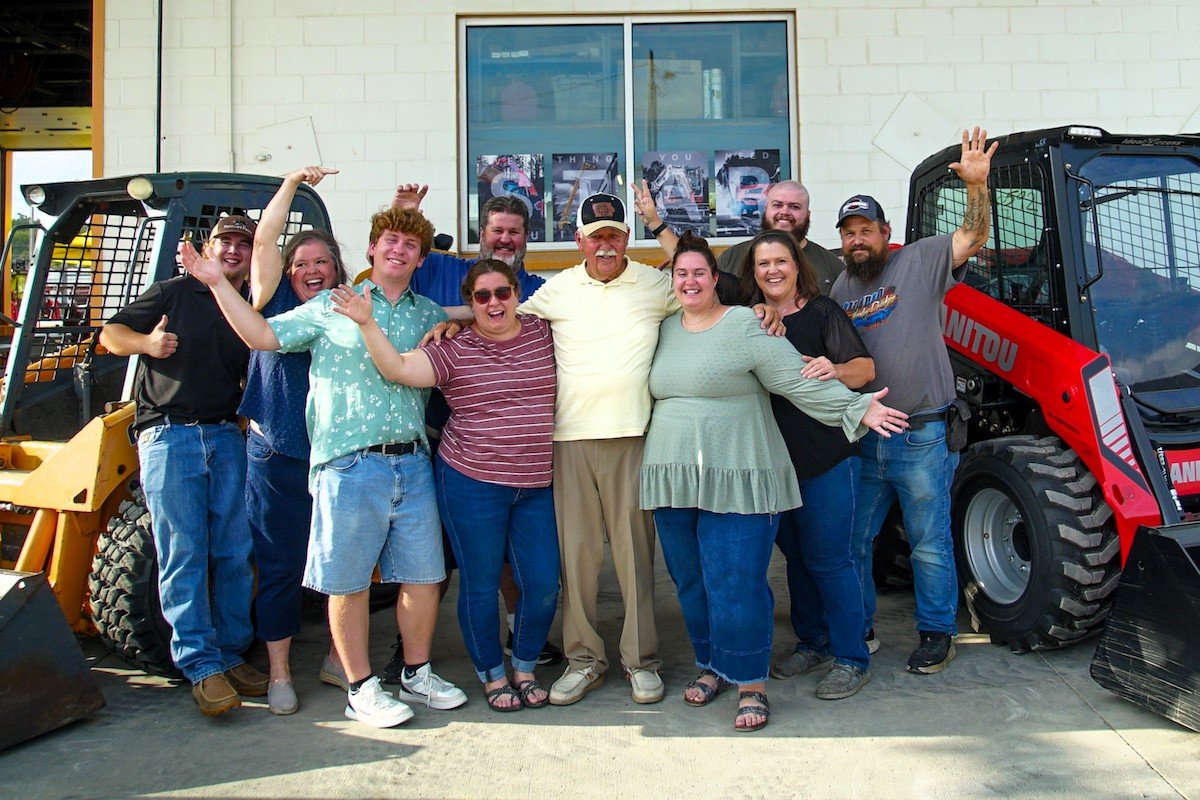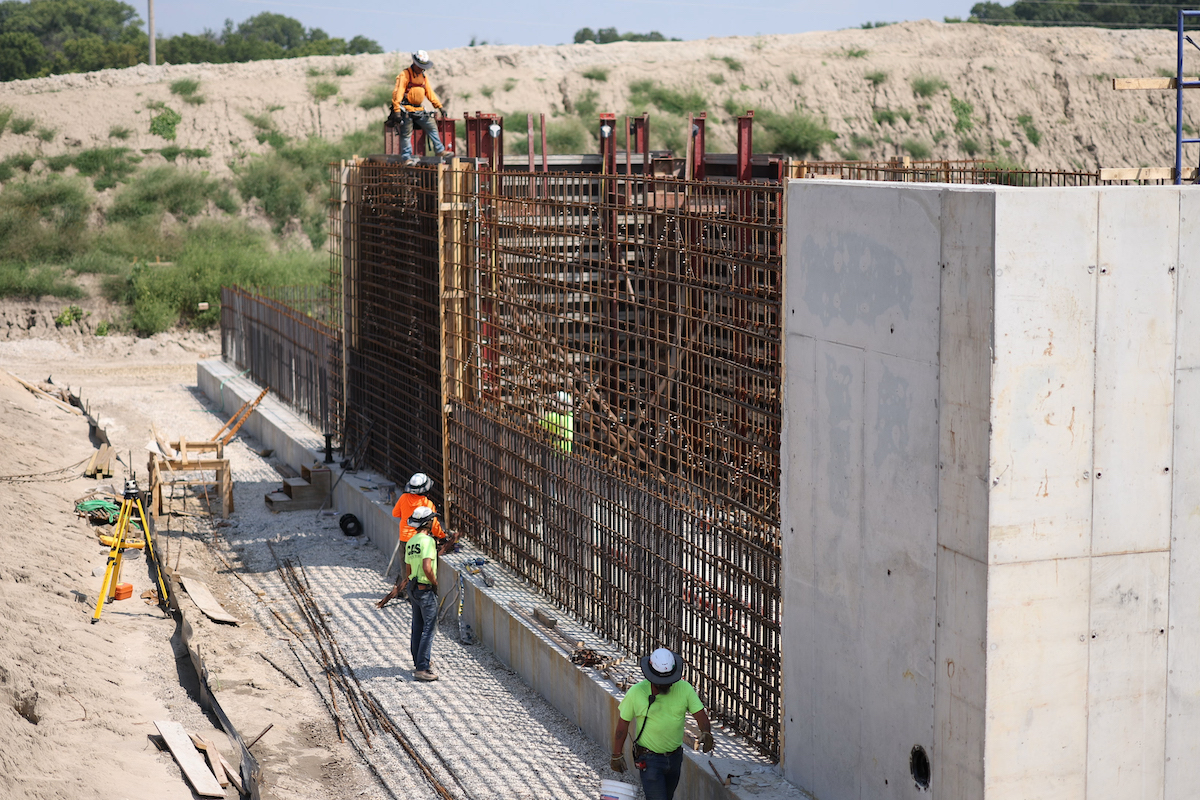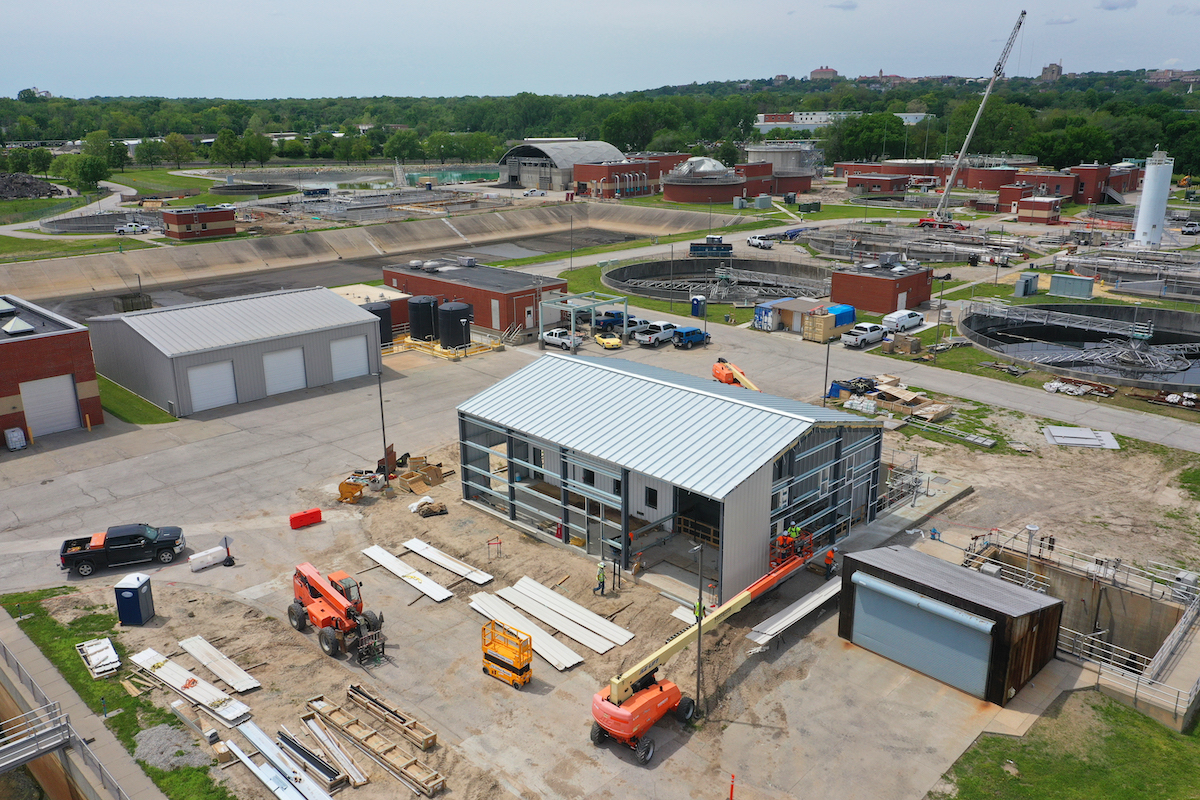Now, the completion of a nearly $80 million ODOT bridge reconstruction project – one of the most expensive road projects in state history – has replaced what were considered the most structurally deficient bridges in the state's highway system. As Chris Harlin, Oklahoma City Resident Engineer for ODOT, reports, “With this project, we have constructed six new bridges on eastbound and westbound I-40 at Crutcho Creek, SE 15th Street, and Sooner Road in Del City. The new bridges have three lanes in each direction and are wider to allow a fourth lane in the future.
“Additionally, ramps and approaches have been upgraded for safety, including creating longer on- and off- ramps for acceleration and deceleration. And something which I'm very happy about – there are also significant ADA-based improvements to sidewalks, etc. to help with access and enhance compliance.”
The new bridges are slightly longer than the ones they replace, ranging from 200 to 400 feet in length, and are built taller to meet modern bridge standards. With their completion, the old bridges will now be demolished.
Contractor for the bridge project, which received 80/20 federal and state funding, is Manhattan Road and Bridge Co. of Tulsa; the project designer was Triad Design Group. Bridge construction began in September 2020.

| Your local Iowa Mold Tooling Co Inc dealer |
|---|
| Star Equipment LTD |
Interstate 40 runs through the heart of Del City, which borders southeast Oklahoma City, Midwest City, and, perhaps most significantly, Tinker Air Force Base. The highway is heavily traveled between downtown Oklahoma City, Tinker, and eastern Oklahoma County, and has become a vital corridor for access the base and to businesses and communities along its route. Tinker Air Force Base, home to over 26,000 military and civilian employees, is the state's largest single-site employer.
“The base was definitely a major factor in developing the bridge project,” Harlin comments. “According to 2018 traffic data, the average daily traffic along the route is nearly 90,000 vehicles, with much of that traffic going to and from Tinker.
“This is also a significant trucking corridor. I-40 is also in close proximity to two other major routes, Interstate 35 and Interstate 44. These three interstates are carrying increasing traffic in all directions through the region. Also, Oklahoma City metro area population growth is expanding.”
“The actual bridge project consisted primarily of three phases,” relates Landry Logan, Oklahoma City Division Manager with Manhattan Road & Bridge Co. “Phase 1 was the construction of the outside half of eastbound I-40. Phase 2 included the construction of all of westbound I-40. Then, Phase 3 was the construction of the inside half of eastbound I-40.
“At the completion of Phase 1, traffic was taken off old westbound I-40,” he continues. “At the end of Phase 2, traffic was removed off all the old bridge structures and roadway onto newly constructed pavement. When Phase 3 was complete, traffic was put into its final configurations.”
“We utilized six structures crews, two paving crews, and three grading and earthwork crews,” he adds. During the project's peak times, there were approximately 100 workers on site.”
Logan comments, “As a company, we have completed several projects of this size and complexity, but given the amount of traffic along this corridor, this was one of our most complex in the Oklahoma City region. There was limited working room and even more limited area for material storage. With every location change we had traffic running on two, if not three, sides of us at all times. Plus, the early stages of the process included a sizable amount of utility relocation – the project is located in a high urban area, which adds challenges to relocation needs.”
Harlin relates, “Traffic flow was a big challenge, keeping the route open and safe. Perhaps the number one challenge was the ramps – especially providing safe merging onto the ramps – and reopening the ramps quickly. Communication has been a key element. Prior to the start of the project, we met with stakeholders, such as businesses and emergency personnel, in the Del City area and established points of contact. This allowed us to coordinate consistent e-mail blasts about construction closures, etc. to as many stakeholders as possible.”
Logan reports that the pandemic did impact the project's work force, with full crews periodically being quarantined and not working on site for a week at a time. He adds, “The cost of materials and goods and the cost to transport those items skyrocketed, and time to receive them took longer than usual. Scheduling is a critical aspect on construction projects, and the pandemic and supply chain disruption exacerbated the need for timely ordering of materials months in advance.
“There were also settlement issues around some of the bridges. We evaluated the site and suggested the design team incorporate Controlled Modulus Columns (CMCs) to alleviate settlement concerns that the geotech reports indicated would occur in some areas of the project. This eliminated the need for temporary pavement which saved both time and money.
Logan says that a wide range of construction equipment has been utilized on the bridge project, including various sizes of cranes and GOMACO slipform pavers. Among the other equipment on the job: backhoes, dozers, articulated trucks, wheel loaders, skid steer loaders, and mini excavators, along with bridge finishing, asphalt lay-down, and milling machines.
As Harlin points out, “This project is really a feather in the cap when it comes to Oklahoma's bridge condition narrative. Fifteen years of diligent work to improve the six worse bridges on our Structurally Deficient list, and get all our bridges off the SD list, is a huge piece of our overall bridge story and will be a boon to travelers.”
The I-40 Del City Bridges required:
- Approximately 75,000 cubic yards of earthwork
- Approximately 1.5 miles of roadway and 10 miles of roadway lanes
- Approximately 40,000 cubic yards of paving material was used
- Approximately 21,500 linear feet of various pipes























